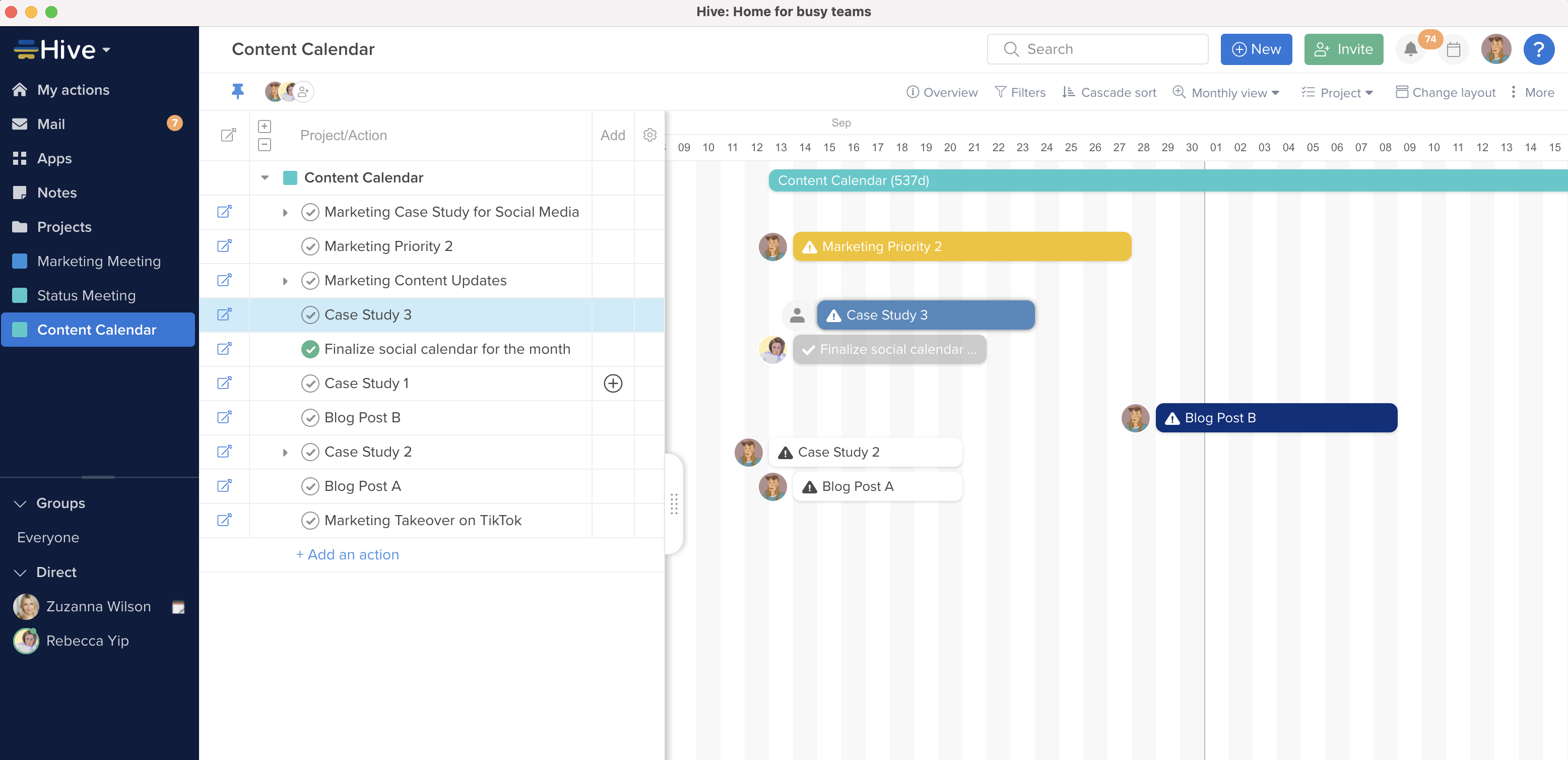Every project is unique, with its own specific goals, participants, and challenges. But one thing that remains the same in every project is the need for effective communication between all project components – whether that’s resources, teammates, or other logistics.
To ensure your project stays on track and reaches its objectives, it’s crucial to identify and understand the stakeholders and how to communicate with them successfully. This article will discuss what stakeholders are, how they fit into your daily operations, and how important it is to manage your team effectively.
What are stakeholders?
Stakeholders are a group of people (or even just one person) who influence a project or can be affected by the process and outcome of the project. Stakeholders can be either internal or external to the organization, and their influence over the project can vary.
These people have “a stake in the project,” which is where the term “stakeholder” originated from. Stakeholders exist at all levels of a company and team, and often span the entire organization.
For example, a project that is working to develop a new product for a company may have the following stakeholders:
- The CEO who has the ultimate responsibility for the success or failure of the project.
- The marketing department who will be responsible for selling the product.
- The research and development team who will be responsible for developing the product.
- The finance department who will need to provide the necessary funding for the project.
- The production team who will be responsible for manufacturing the product.
- The company owners, depending on the structure and legality of the organization.
Within this one project alone, we have identified at least 6 stakeholders. And the success or failure of this project will depend on how the outcome will affect all of these stakeholders. All of these members will need to be updated on progress and complete tasks that aid in the project’s completion.
Do you really need a stakeholder in a project?
The answer to this question is: maybe. The need for stakeholders depends on a project’s scope and what is at stake for each individual or group. For example, if a project is very small and has little risk, it may not be necessary to involve all stakeholders. Involving more team members could actually reduce the efficiency in these instances, which is why it’s important to know when to bring other stakeholders from your team into the mix.
An example would be creating a simple deliverable, such as a report, where maybe only one stakeholder is affected. In this instance, it would not be necessary to involve other stakeholders in the project.
On the other hand, if the project is large and has a lot of risks, it’s crucial to have as many stakeholders involved as possible to get different perspectives and ideas on how to mitigate risks.
An example of this would be creating a completely new website. The potential stakeholders involved in this project would be the marketing department to ensure that the website meets customers’ needs, the IT department to ensure that the website is secure and easy to use, and the finance department to ensure the budget is being followed.
How are stakeholders identified?
There are a few different ways that stakeholders can be identified. The first is through a stakeholder analysis, which is a process of identifying and assessing the importance of each stakeholder. This can be done through surveys, interviews, or even focus groups.
Another way to identify stakeholders is simply looking at who will be affected by the project. These people may not have any direct involvement in the project, but they will still be impacted by it. You can also look at who has a vested interest in the project’s success. This could be anyone from shareholders to suppliers. Don’t leave any rock unturned! You can find stakeholders anywhere!
Steps to understand your stakeholders
After your stakeholders are identified, you need to understand the specific goals and aspirations of the project. Again, it’s often best to meet directly or have a phone call with your stakeholder to understand exactly what they want to see out of the project. Examples of questions to ask your stakeholders can include:
- What are your goals for this project?
- What are your expectations for the outcome of this project?
- What is your timeline for this project?
- Are there any specific deliverables that you are looking for?
- Are there any conflicts of interest we should be aware of?
After you have gathered all this information from your stakeholder, you can develop a communication plan. This plan should include how often you will communicate with each stakeholder, what method of communication will be used, and what type of information will be shared.
Keep in mind that stakeholders may have different opinions about the project and its objectives. It’s the project manager’s job to ensure that everyone is on the same page and working towards the same goal. In some cases, you may need to manage stakeholders with conflicting interests.
How to effectively manage stakeholders?
Effective communication and stakeholder management are critical for ensuring that your project is successful. By taking the time to identify and understand your stakeholders, you can set your project up for success from the start. The below five steps are a few ways you can effectively manage and inform your stakeholders before the first task is even created:
- Identify your stakeholders early in the project.
- Communicate with stakeholders regularly.
- Make sure all stakeholders understand the objectives of the project and their role in it.
- Request feedback from every stakeholder throughout the project.
- Immediately address any stakeholder concerns or issues that may come up.
With proper management and open lines of communication, stakeholders can be a great asset to a project, but they can also be a source of conflict. Unfortunately, not all stakeholders will have the same interests or priorities. For example, the CEO might be more concerned with the bottom line, while the marketing department might be more concerned with meeting customer needs. Balancing these competing interests can be challenging, but a successful project manager should have all lines of communication open so adjusting to changes is possible.
Software to assist stakeholders

Keeping track of every project and stakeholder can be a daunting task. When you invest in a project management software like Hive, you can keep everything in one place for all of your stakeholders. When you use Hive to manage your projects, you can:
- Add unlimited stakeholders and keep track of their contact information.
- View the project from each stakeholder’s perspective.
- Invite stakeholders to comment on specific tasks or deliverables.
- Receive notifications when a stakeholder comments on a task.
- Track which tasks each stakeholder is assigned.
Each stakeholder can have their own unique view in Hive to ensure that they’re up-to-date on the items that matter to them. Notifications will also ensure updates are given regularly, and with features like commenting and task assignment, you can ensure that every stakeholder is involved in the project and aware of their role. Using Hive can effectively manage your stakeholders and keep your project on track for success.




